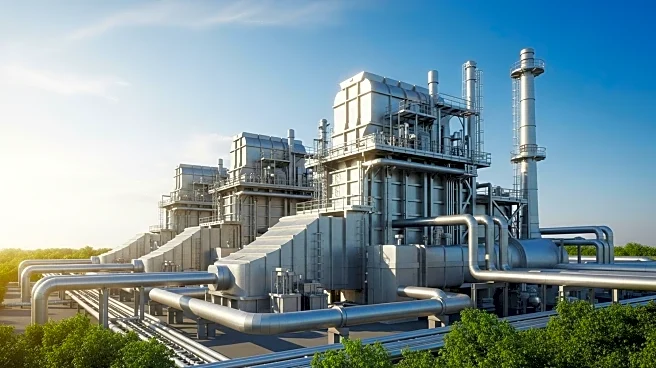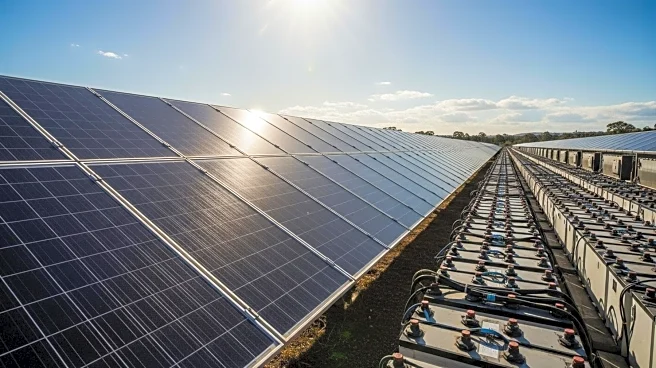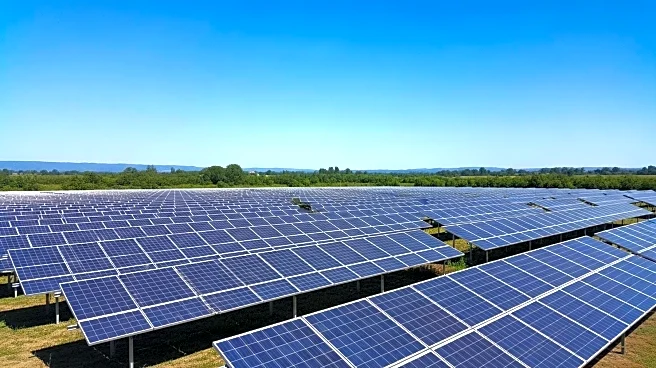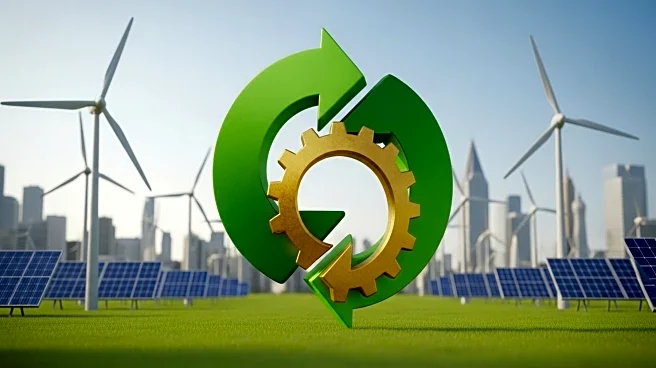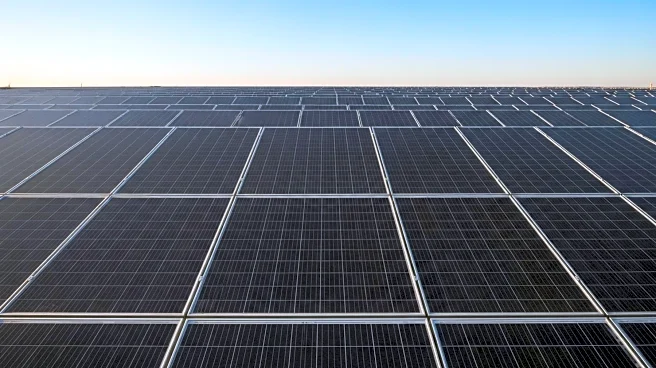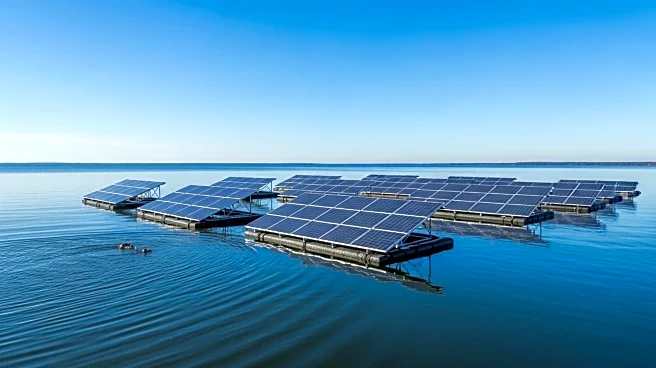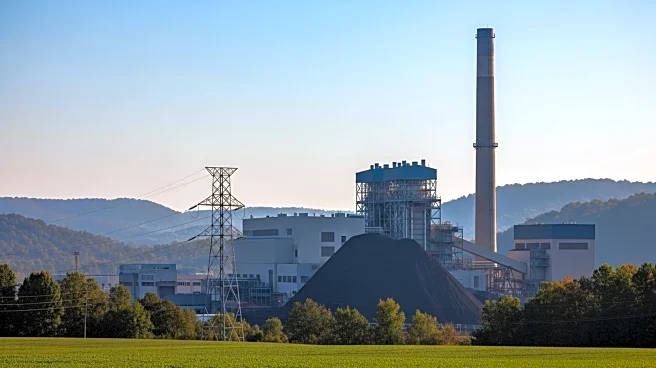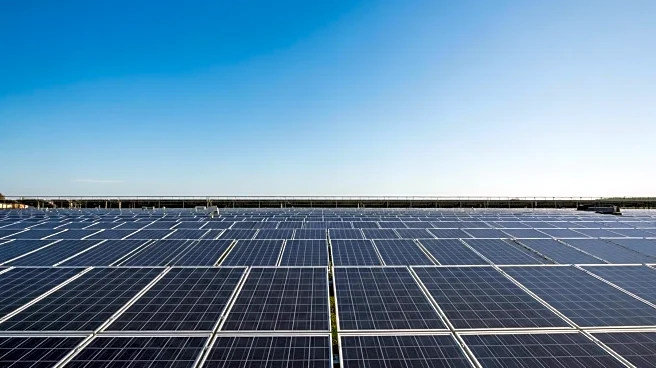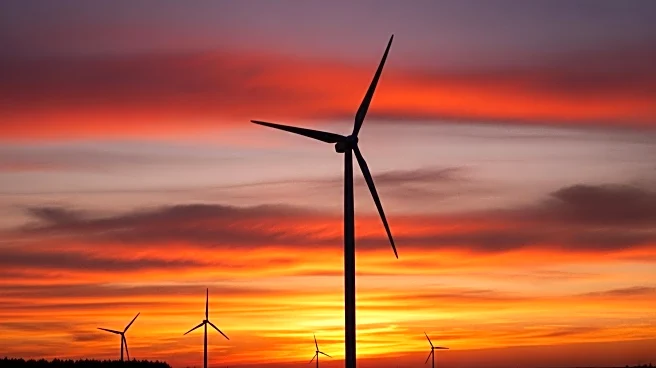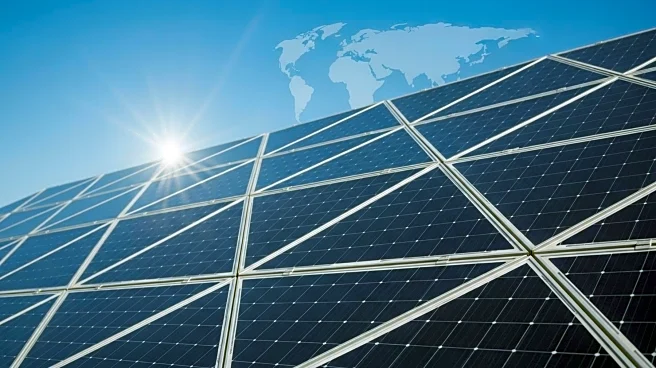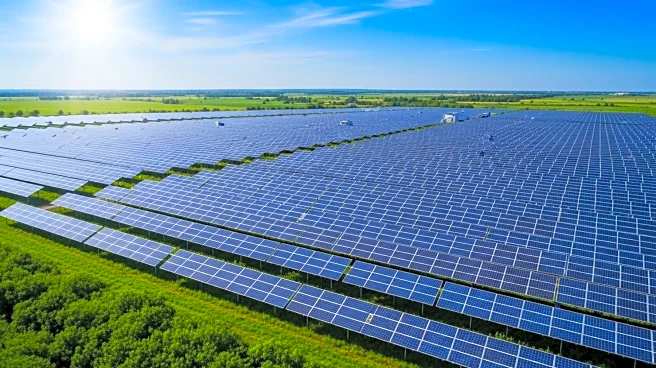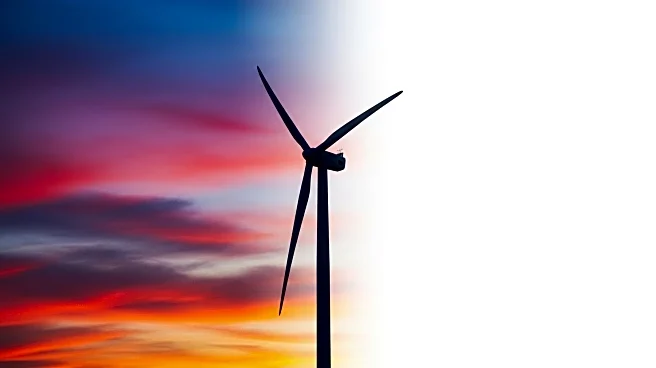What is the story about?
What's Happening?
FirstEnergy Corp. has announced plans to construct a new 1,200-MW natural gas-fired combined-cycle power plant in West Virginia. This proposal is part of the company's Integrated Resource Plan (IRP) submitted to state regulators, which also includes maintaining two major coal-fired power plants in the state for at least the next decade. The new gas-fired power station is expected to be operational by 2031, and FirstEnergy plans to add at least 70 MW of solar power generation capacity by 2028. The IRP supports West Virginia Governor Patrick Morrisey's '50 by 50' initiative, aiming to increase the state's power generation capacity to at least 50 GW by 2050. FirstEnergy's plan reflects a long-term strategy to ensure reliable power delivery while supporting economic development and managing costs for customers.
Why It's Important?
The proposal by FirstEnergy is significant as it aligns with West Virginia's strategic goals to enhance its energy infrastructure and capacity. By investing in both natural gas and solar power, the plan aims to diversify the state's energy sources, potentially reducing reliance on coal, which currently accounts for over 80% of West Virginia's electricity production. This move could lead to job creation and economic growth in the region, as emphasized by West Virginia state treasurer Larry Pack. The development of a new gas-fired plant and the maintenance of existing coal-fired plants highlight the state's commitment to using local resources, which could bolster its position as an energy powerhouse in the U.S.
What's Next?
FirstEnergy's plan will undergo regulatory review, and the company will need to secure necessary permits and approvals to proceed with construction. Stakeholders, including state officials and environmental groups, may weigh in on the proposal, potentially influencing its implementation. The company's commitment to adding solar capacity by 2028 suggests ongoing efforts to integrate renewable energy into West Virginia's power grid. As the project progresses, FirstEnergy will likely engage with local communities to address concerns and ensure the benefits of the new plant are realized.
Beyond the Headlines
The proposal raises questions about the balance between traditional and renewable energy sources in West Virginia's future. While the plan supports economic growth, it also underscores the state's continued reliance on coal, which may face scrutiny from environmental advocates. The integration of solar power indicates a shift towards cleaner energy, but the pace and scale of this transition remain uncertain. The long-term environmental impact of maintaining coal-fired plants alongside new gas infrastructure will be a critical consideration for policymakers and industry leaders.
AI Generated Content
Do you find this article useful?
